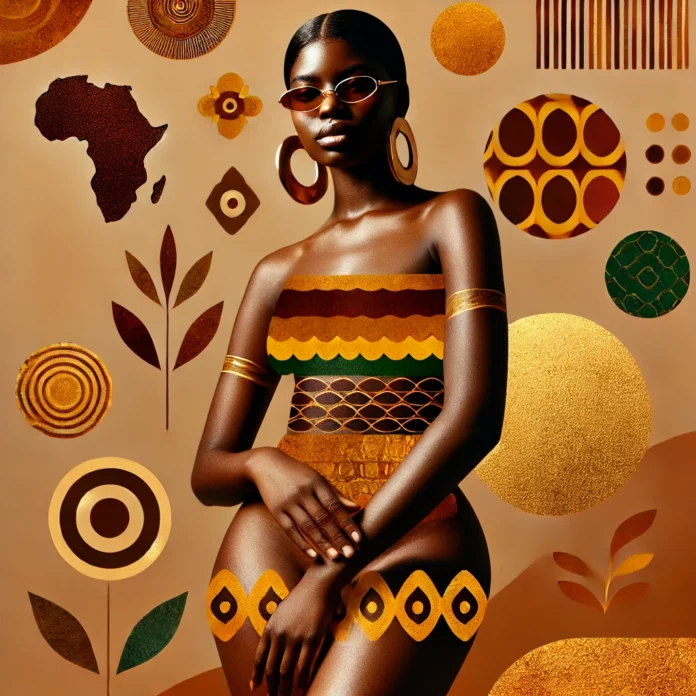Let’s talk about something unique: Unusual Award N.13: Extreme Gluteal Proportions in African Woman.
You may have seen or heard about African women with remarkable body shapes, particularly those with naturally large gluteal proportions. This topic often brings up real questions and worries.
Why do some women have such extreme proportions?
Is it healthy?
What’s behind this phenomenon?
These questions come from curiosity, concern, and sometimes, fascination.
The Natural Beauty of Extreme Gluteal Proportions
Let’s start with this: Extreme gluteal proportions are completely natural for many African women.
These body shapes are not the result of surgery or enhancements but are instead deeply connected to genetic traits passed down over generations. For some African women, especially in specific regions, these larger proportions are a common characteristic.
Think of this as an extraordinary display of diversity in human body shapes. These natural proportions are celebrated in many African cultures, where they symbolize beauty, strength, and health.
Why Do Some African Women Have Extreme Gluteal Proportions?
It’s all about genetics.
Some African ethnic groups, particularly in regions like Southern Africa, have a genetic predisposition for storing fat in certain parts of the body, especially the glutes. This genetic trait, called steatopygia, causes fat to accumulate more in the lower body.
But what makes this an “unusual award” is not just the size—it’s the balance and shape that stand out. The proportions are not the same for every woman, and it’s a completely natural part of human variation.
Is Having Extreme Gluteal Proportions Healthy?
One of the biggest worries people often have is whether extreme gluteal proportions affect health.
Here’s the answer: as long as a person is healthy, these proportions are not a problem.
In fact, having more fat around the hips and thighs, compared to the abdomen, has been linked to better heart health in some studies.
So, yes, extreme gluteal proportions are not only natural but can be healthy.
However, like anyone else, maintaining a balanced diet and active lifestyle is key.
Real Stories of African Women Celebrating Their Bodies
It’s not just about numbers or science—it’s about real women who embrace their natural bodies.
Take, for example, the stories of women from the Khoisan people, a group in Southern Africa with notable steatopygia. Many women proudly showcase their curves, often seen as a mark of femininity and beauty in their culture.
In today’s world, we also see many African women using platforms like Instagram to highlight and celebrate their extreme gluteal proportions. From fitness influencers to everyday women, there’s a growing movement of body positivity that empowers women to embrace their natural shapes, no matter the size.
FAQs About Extreme Gluteal Proportions
1. Is it possible for extreme gluteal proportions to be surgically enhanced?
While surgery can create similar results, the Unusual Award N.13: Extreme Gluteal Proportions in African Woman highlights a naturally occurring body shape, common in some African women.
It’s about genetics, not surgery.
2. Do extreme gluteal proportions cause back problems?
There’s no direct link between large glutes and back issues.
However, if there are other factors like posture or core weakness, it’s important to maintain overall body strength.
3. Can extreme gluteal proportions affect mobility?
No, extreme gluteal proportions do not typically affect a person’s ability to move, run, or engage in physical activity.
In fact, many African women with this body shape lead very active lifestyles.
4. Is it true that fat in the hips and thighs is healthier than belly fat?
Yes, studies have shown that having more fat in the lower body, like the hips and thighs, may protect against certain conditions, such as heart disease.
5. Are extreme gluteal proportions common in all African women?
Not all African women have extreme gluteal proportions.
It’s more common in some ethnic groups, particularly in Southern Africa, due to genetic factors.
Embracing Diversity in Body Shapes
In a world where the “ideal body” often changes depending on trends, it’s essential to remember that extreme gluteal proportions are just one of the many beautiful ways bodies can be shaped. These proportions aren’t unusual within the communities where they’re more common, but they’re fascinating and awe-inspiring for many outside those communities.
So, what does this Unusual Award N.13 truly represent?
It’s a celebration of diversity, genetics, and the unique beauty of African women with extreme gluteal proportions.
The world of body shapes is vast, and extreme gluteal proportions add to the rich tapestry of human variety. It’s not just about size—it’s about how each individual’s body tells a story of their heritage, their culture, and their uniqueness.
- Also Read: Clip art:gu3viyj7xqo= Soccer Ball.
Wrapping It Up
Unusual Award N.13: Extreme Gluteal Proportions in African Woman highlights a natural and celebrated phenomenon.
It’s a fascinating aspect of human diversity that deserves recognition and respect.
As we dive deeper into understanding different body shapes, we learn one important thing: beauty truly comes in all shapes and sizes.


